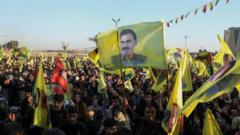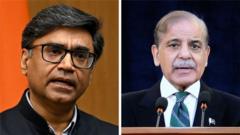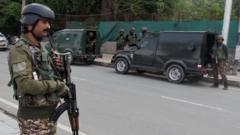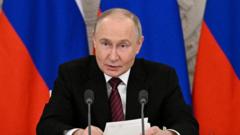As a chaotic four-day conflict between nuclear-armed India and Pakistan unfolds, the risks of future battles intensify. New military advancements leveraged in aerial confrontations heighten concerns, while past diplomatic interventions appear increasingly ineffective.
Tensions Resurge: Analyzing the Recent India-Pakistan Conflict

Tensions Resurge: Analyzing the Recent India-Pakistan Conflict
A new chapter in the long-standing India-Pakistan rivalry reveals the precariousness of peace amidst advanced military technology and nationalistic fervor.
The ongoing tensions between India and Pakistan have taken a perilous turn as recent escalations underline the fragility of peace in the region. Both countries, armed with nuclear capabilities, narrowly averted catastrophe after a four-day conflict that saw unprecedented military engagements, raising alarms within international circles.
The clash marked a significant shift in combat dynamics with the introduction of advanced military technologies that facilitated an extensive aerial campaign, including waves of airstrikes and a dramatic increase in the use of weaponized drones. This new mode of warfare saw hundreds of drones deployed above the contested Line of Control in Kashmir, targeting defense installations with alarming precision and sparking grave retaliatory threats.
The volatile situation prompted military alerts at the highest levels and escalated anxieties on both sides as missiles and drones traversed borders, threatening to obliterate decades of restraint that have traditionally characterized high-tension scenarios. Yet, the mediation processes that historically quelled such bouts of hostility seemed alarmingly absent.
As the world grapples with numerous conflicts, analysts like Srinath Raghavan emphasize the necessity of external intervention to navigate these turbulent waters and prevent further conflict. However, with the international community appearing distracted and less engaged, the safety net once relied upon for de-escalation shows signs of weakening, leaving an already precarious state of affairs even more at risk. The latest surge in hostilities signals not merely a passing moment of strife but potentially a harbinger of more frequent confrontations ahead, prompting urgent dialogue and commitment to a lasting peace.





















